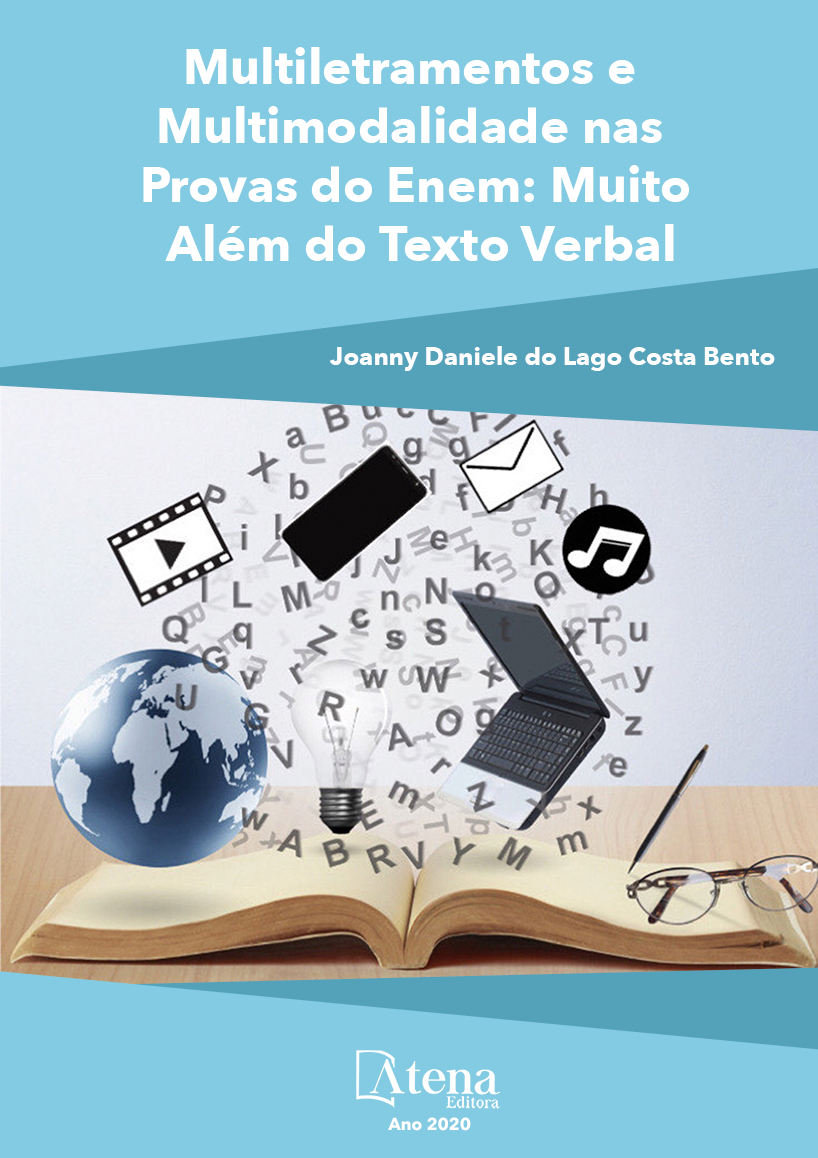
MULTILETRAMENTOS E MULTIMODALIDADE NAS PROVAS DO ENEM: MUITO ALÉM DO TEXTO VERBAL
Esta pesquisa tem o objetivo de analisar questões das provas de Língua Portuguesa do Enem à luz das teorias de Multiletramentos e de Multimodalidade para verificar a ocorrência de textos multimodais e as habilidades de leitura que são requeridas para a compreensão desses textos. Para alcançar os resultados, a análise é fundamentada pelas teorias da Análise de Discurso Crítica (ADC) – Chouliaraki & Fairclough (1999) e Fairclough (2001; 2003) – ao investigar os tipos de texto multimodal que estão presentes nas questões das provas de Língua Portuguesa do Enem; pelas teorias da Multimodalidade – Kress & van Leeuwen (2001) e Vieira (2007; 2010) – e da Gramática de Design Visual – Kress & van Leeuwen (2006) – ao examinar como os textos multimodais são utilizados nas questões do Enem; e por meio das teorias de Multiletramentos – Cope & Kalantzis (2000) e Rojo & Moura (2012) – ao averiguar como os multiletramentos são abordados nas questões. O corpus deste trabalho é composto por oito questões, com textos motivadores multimodais, retiradas do caderno de prova Linguagens, Códigos e suas Tecnologias: as questões selecionadas representam os oito anos (de 2009 a 2016), uma questão de cada ano, desde a primeira reformulação e reorganização das provas do Enem. Nesta pesquisa, abordo a metodologia qualitativa com aspectos baseados em Bauer e Gaskell (2000), Denzin (2006) e Flick (2013). Os resultados obtidos demonstram que os significados textuais são compostos pelas modalidades verbal e não verbal, que se complementam para dar sentido aos textos motivadores. A composição textual dos textos motivadores requer do leitor uma experiência multiletrada, pois se trata de textos diversos como panfletos, cartazes, tirinhas, infográficos, etc. Por isso, é necessário que os estudantes utilizem sua experiência como leitor com conhecimentos linguísticos e extralinguísticos adquiridos ao longo de sua vida escolar e extraescolar.
MULTILETRAMENTOS E MULTIMODALIDADE NAS PROVAS DO ENEM: MUITO ALÉM DO TEXTO VERBAL
-
DOI: 10.22533/at.ed.190202306
-
Palavras-chave: Análise de Discurso Crítica; Multiletramentos; Multimodalidade; Enem; Composição Textual.
-
Keywords: Critical Discourse Analysis; Multiliteracies; Multimodality; Enem; Textual Composition.
-
Abstract:
This research has the objective of analyzing questions of the Portuguese Language tests of the Enem based on the theories of Multiliteracies and of Multimodality to verify the occurrence of multimodal texts and the reading abilities that are required for the understanding of these texts.To achieve the results, the analysis is based on theories of Critical Discourse Analysis (CDA) – Chouliaraki & Fairclough (1999) and Fairclough (2001; 2003) by investigating the types of multimodal text that are present in the questions of the Portuguese Language tests of the Enem; on the theories of Multimodality – Kress & van Leeuwen (2001) and Vieira (2007; 2010) – and the Grammar of Visual Design – Kress & van Leeuwen (2006) when examining how multimodal texts are used in the Enem tests; and through the theories of Multiliteracies – Cope & Kalantzis (2000) and Rojo & Moura (2012) when figuring out how the multiliteracies are approached in the issues.The corpus of this paper is composed of eight questions with multimodal motivator texts taken from the test book Languages, Codes and their Technologies, the selected questions represent the eight years (from 2009 to 2016), a question of each year, from the first reformulation and reorganization of the Enem tests. In this research, I approach the qualitative methodology with aspects based on Bauer and Gaskell (2000), Denzin (2006) and Flick (2013). The results show that the textual meanings are composed of verbal and nonverbal modalities, which complement each other to give meaning to the motivator texts.The textual composition of the motivation texts requires the reader to have a multiliterate experience, because they are diverse texts such as pamphlets, posters, comic strips, infographics, etc. Therefore, it is necessary that students use their experience as a reader with linguistic and extralinguistic knowledge acquired throughout their school and out-of-school life.
-
Número de páginas: 125
- Joanny Daniele do Lago Costa Bento


